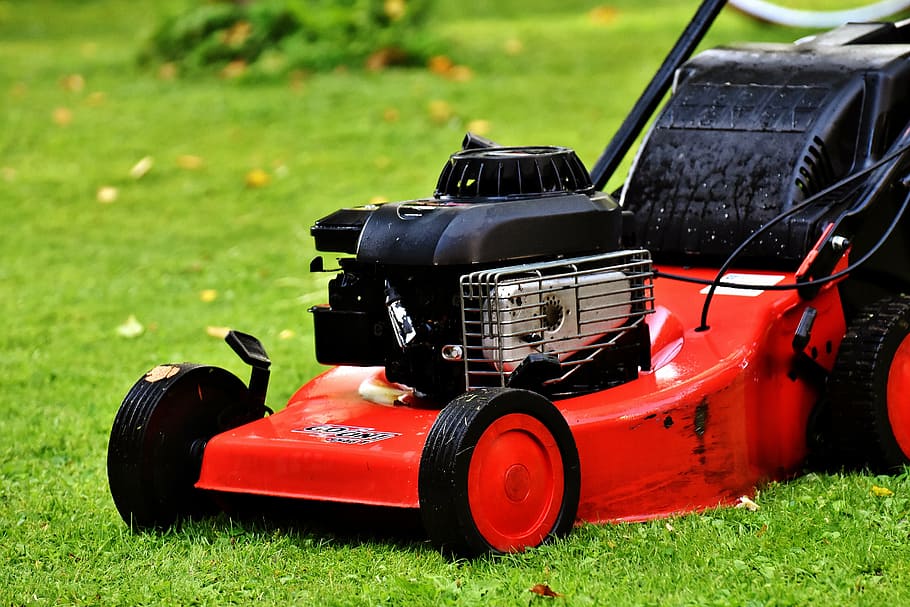Ever seen those perfect lawns in magazines or on TV? The ones that are so green and luscious, they look like a carpet you could roll out and take a nap on? Believe it or not, achieving a lawn like that takes work – but it’s definitely doable.
It all starts with your spring lawn care routine. Get it right, and you’ll be on your way to a summer of beautiful lawns. Get it wrong, and you might find yourself struggling to catch up all season long.
And the very first and most important step of your lawn care schedule? The first mow of the season is important. Getting your mower ready for action. But how do you prep your lawn and when’s the best time to get the mower blades in action? Not to worry, we’ll tell you everything you need to know.
When should you start mowing your lawn?

When it comes to deciding when to mow your lawn grass, making the right decision is crucial to the health of your lawn. Grass grows at different rates depending on the season, the amount of sunlight it’s getting, and the type of grass you have.
It’s best to spread your mowing sessions from March through October. Here’s a quick guide to when you should mow your grass during the various seasons:
Spring
You will want to perform your first mowing session of the year in spring, preferably around mid-March. After that, you can keep mowing the lawn ideally once per week.
Summer
As summer kicks in, you will have to double the frequency of mowing. During summer, you will have to stick to a bi-weekly rate of mowing your lawn on average. In times of drought, however, you can lower the rate of mowing to only once per week.
It’s also recommended that you raise the mower blades a little whenever you encounter sweltering spells. That’s in consideration that longer grass will be more capable of handling drought and will retain a vibrant color.
In addition, it will be better at withstanding wear and tear. During drought, as such, you can get away with nipping off only a few stalks of the grass that seems longer on your lawn.
Fall
During the fall, the days will be growing shorter as the temperatures also start to drop. Your grass will also respond by slowing down its growth rate.
As a result, you can lower the frequency of your mowing sessions to once every week. And as winter nears, you will be better off raising the height of the mower blades.
This should the season when your lawn’s grass gets the last cut of the year in preparation for winter.
Winter
As we all know, grass almost doesn’t grow during winter. And since the height will be increasing in diminutive margins during this time, there’s no need to mow the lawn.
There is an exception to this rule, however. If you live in an area where the weather is warm during winter and your grass is still growing, you can perform a light trimming with the mower blades on an elevated setting.
But as a general rule of thumb, it’s best to keep the mower in the shed during this time
What should be the ideal temperature before the first mow?
In terms of temperature, it’s best to wait for the ground to warm up before you mow the lawn. This is not only in consideration of the comfort of your feet as you go about mowing. It also has something to do with the health of the grass.
If you mow the lawn when the ground is too cold and the grass hasn’t thawed, you run the risk of damaging the grass blades. It’s, therefore, advisable to wait until the temperatures hit 40 degrees Fahrenheit consistently.
What are the height requirements for the first mow?
The first mow of the season should be more of a trim, such that the mower leaves behind grass that is about 2-3 inches tall. After that, you will want to cut the grass back down every time it reaches a height of 3″-3.75″.
It’s good to keep in mind that the type of grass on your lawn can dictate the ideal mowing height. A majority of the grass types have the ideal cutting height between 2-3 inches. The only two widely-known exceptions are Bermuda grass and Zoysia grass, which have an ideal range of 1″-1.5″.
How should you cut tall grass?
If your grass is too tall before the first mowing, you will want to use the one-third mowing rule.
This rule stipulates that you shouldn’t cut more than one-third of the height of the grass with each mowing session. So, if your grass is 6 inches tall, you shouldn’t cut more than 2 inches with each mowing session.
This will ensure that you don’t stress the grass too much, which can lead to turf problems. It’s also worth noting that you should never mow when the grass is wet. This will only serve to damage the grass blades.
First Mow of The Season: Closing remarks
After reading this article, you now have a clear understanding of when to mow your lawn for the first time. You also know what factors to consider in terms of temperature and grass height. Just make sure to remember these conditions, and use a mower with sharp blades for a clean cut.
